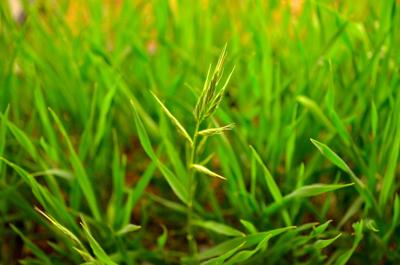The future of sustainability at Penn State is being led by researchers, such as Charles Anderson, who’s devoted his research to understanding plants for the benefit of sustainability.
Anderson, associate professor of biology and associate department head of research and faculty success, said his research focuses on the dynamics of plant cell walls, as well as other sustainability trends, such as converting plants into renewable energy.
“Despite decades or even centuries of research, we actually don’t really understand what the structure of plant walls look like,” Anderson said. “We hope by unlocking some of those secrets, we can potentially use plants in new and very exciting ways.”
Beginning in biomedical science at the University of North Carolina at Chapel Hill, Anderson said he became interested in applying the “world of cell biology” to environmental issues during his doctoral research at Stanford University.
He then performed research at The University of California Berkeley’s Energy & Biosciences Institute, where Anderson said he focused on the entirety of bioenergy.
Anderson started his research at Penn State in 2012 and said he “felt lucky” to be back in his home state, doing “great science” and teaching students.
The research on plant cell walls could potentially be used as a durable and biodegradable replacement for plastics or for pharmaceuticals, Anderson said.
“The research will inform others who are developing technologies that are going to really help us build what we call a circular bioeconomy, meaning an economy that's based on renewable resources,” Anderson said, “built in a way that will incorporate the ecology of the natural world into the human economy in a really synergistic way that's beneficial for both.”
MORE NEWS COVERAGE
When asked about her current fight with the Bellefonte Area School District, Penn State Admi…
Anderson said he’s also involved in the Eberly College of Science Sustainability Council and Penn State’s Carbon Emissions Reduction Task Force, which both work toward reducing carbon emissions on campus.
On the sustainability council, Anderson said they help incorporate the United Nation’s 17 Sustainable Development Goals at Penn State, which include sustainability efforts as well as gender equality and reducing poverty.
While the university decreased carbon emissions by 38% since 2005, Anderson said the goal is to reduce all carbon emissions by 2035, working toward a “carbon negative” campus.
Penn State was recently ranked No. 38 out of 700 institutions internationally in a sustainability assessment and No. 31 in “Sustainable Research” by ranking organization Quacquarelli Symonds.
“We really hope that we’ll be able to leverage that leadership position and have Penn State become an international leader in sustainability education,” Anderson said.
An “exciting part” of the research is the opportunity to work with students in research, Anderson said.
Anderson said he teaches a first-year research initiative course, a replacement for typical beginning biology labs that allows students to get involved in research.
Angelica Dunham, a student who took Anderson’s FRI lab, said the freshman class was the “best experience,” which helped her with research techniques she now uses for research on the stomata in Anderson’s lab.
Dunham (junior-biology) said the sustainability work they’ve done in the lab has become a “life-learning opportunity” outside of the science they do.
“Climate change is impending doom almost, and I think [Anderson] is very passionate about doing our part and being as sustainable as possible,” Dunham said. “It’s opened my eyes to ways to be more sustainable not only in science but everyday life.”
For graduate student Sydney Duncombe, her focus in the lab, funded by the U.S. Department of Energy, is to better understand how plants build their cell walls to figure out how to better break them down for energy.
Duncombe (graduate-biology) said she likes how the Anderson Lab focuses on different aspects of sustainability, such as a group that focuses on how to sustain the human population in case of catastrophe.
“Climate change is a looming threat to our generation,” Duncombe said. “I just like the planet we live on, and I’d like it to stay healthy.”
Duncombe said Anderson is very motivated and intelligent, and he also works hard to keep the lab itself as sustainable as possible.
“Students have a really unique perspective — they know they’re going to have to live in a world 20, 30, 50 years from now that’s going to be different from the world it is now,” Anderson said. “I think if we provide those students with the right tools to address some of those challenges, they’ll feel empowered to make those positive changes.”
MORE NEWS COVERAGE
When State College natives Kevin and Kimberly Murphy began dating during their high school y…






